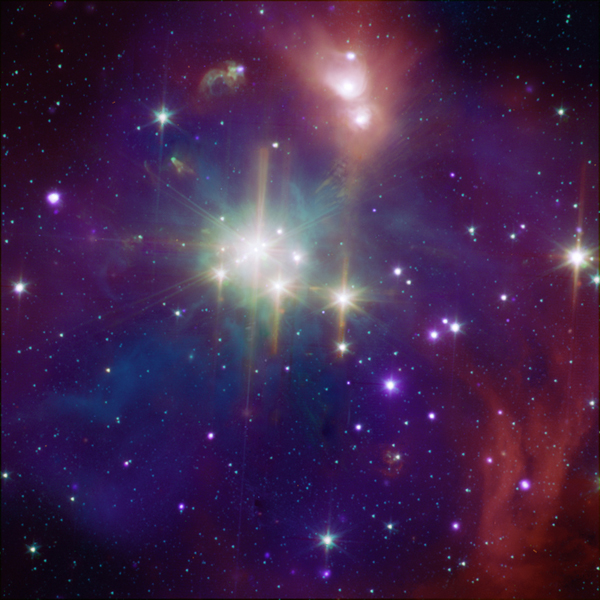Coronet Cluster: A region of star formation about 420 light years from Earth.
Caption: The Corona Australis region is one of
the nearest and most active regions of
ongoing star formation in our Galaxy.
At only 420 light years away, the
Coronet is 3.5 times closer than the
Orion Nebula Cluster. The Coronet contains
a loose cluster of a few dozen
known young stars with a wide range of
masses at various stages of evolution.
The central area of the star-forming
region contains the densest clustering
of very young stars, embedded in dust
and gas. This composite image shows the
Coronet in X-rays (Chandra, purple)
and infrared emission (Spitzer, orange,
green, and cyan). By studying the variability
in different energies, scientists
hope to better understand the evolution
of very young stars.
Scale: Image is 16.8 arcmin per side.
Chandra X-ray Observatory ACIS Image
|


